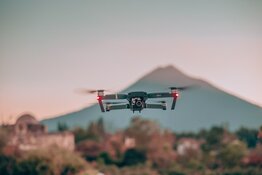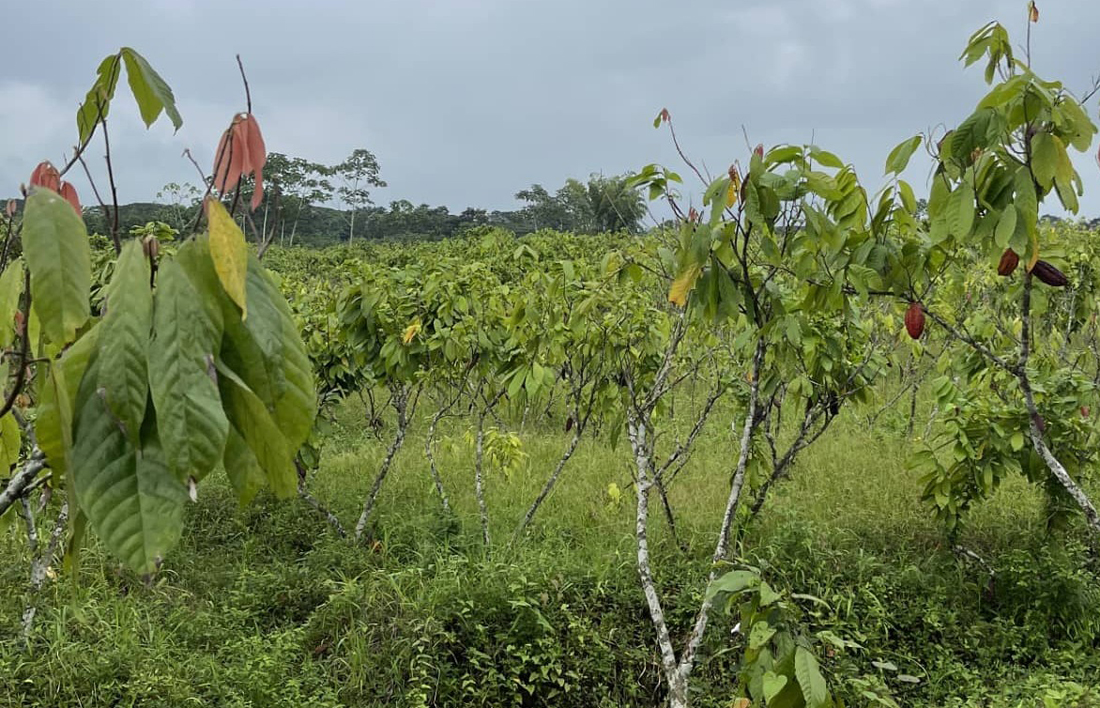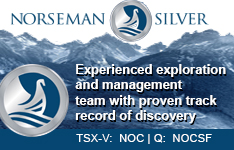"Where's the (sustainable) beef?" It's a question U.S. consumers are asking more and more. The answer? It is coming . . . and soon.
Grass-fed beef, with a lower carbon footprint, is already available in the market, but it’s just not the same as the corn-fed beef people have grown up with. Most grass-fed beef is sold as ground because it just isn't tender or tasty enough for steaks.
To produce a sustainable USDA Prime or Choice cut, with the flavor and texture the consumer expects from U.S. beef, requires a foundational change in how we raise cattle. One company is leading that change with the goal of beginning to produce truly sustainable beef at scale within the next two years.
Bion Environmental Technologies Inc.'s (BNET:OTCQB) proprietary system will make livestock waste drastically less harmful. This is done by treating the waste from the finishing facility, where cattle are corn-fed, and the vast majority of U.S. beef is produced. Bion's ag-tech will reduce harmful pollution from these facilities' waste and then upcycle it into valuable fertilizer products, clean water, and renewable energy.
"Bion's patented third-generation technology was designed to minimize the environmental impacts of large-scale livestock production, improve its economics, and deliver a USDA-certified sustainable product to the consumer," the company said. "Today, the beef industry and livestock in general face a number of challenges, mostly due to the environmental impacts of production. Bion’s technology and strategic partner approach offers a unique opportunity to meet those challenges."
Specifically, the New York-based company's technology removes ammonia (NH3) from livestock waste streams, then stabilizes and repurposes it into low-carbon, organic nitrogen fertilizers, clean water, and renewable energy. This system keeps ammonia, deleterious to people and the environment, out of the air, land, and water and saves the resource from being squandered. The process achieves this using only the compounds in the waste stream.
"In current feedlot scenarios, there is typically no water reuse, so Bion's water-recycling loops represent a tangible reduction in the water footprint of beef production," said the company. "Also, its shallow-pit barn continuously and rapidly moves manure into the digester, significantly reducing both carbon and nitrogen emissions, as well as odors."
Bion's technology also helps cattle feeders and producers create more value for their commodity through premium pricing for the sustainable brand, the company noted.
Other Targets: Manure Digesters, Tainted Water
Along with its positive impacts on the ranching/beef industry, Bion's technology could solve the problem of ammonia emissions from anaerobic digesters currently being used to reduce greenhouse gases emitted at dairy and other operations, the company noted. In these digesters, or sealed, oxygen-free tanks or containers, manure gets digested bacterially, during which biogas (primarily methane and carbon dioxide) is produced to be used as renewable energy.
According to the Environmental Protection Agency's (EPA) January 2023 data, about 340 manure digesters are currently in operation, mostly on dairies and most commonly in California, Wisconsin, and Pennsylvania, with another roughly 85 more being built. In total, there are over 2,300 digester sites across the U.S., processing manure, food waste, municipal solid waste, and wastewater.
Digesters do reduce greenhouse gas emissions but simultaneously increase the amount of ammonia emitted by 81% in a 2017 University of Wisconsin study, according to a related article in Science Direct. Separating liquid and solid manure after digestion was shown to reduce NH3 emissions somewhat but not entirely.
Today, the global ag-tech market is worth US$21.89 billion ($21.89B), according to Exploding Topics. It is forecasted to grow another 98% by 2030 and reach US$43.37B in value.
Another potential revenue stream for Bion, the company said, is through reducing emissions and nitrate impacts in the water at concentrated animal feeding operations, or CAFOs, and in other problematic U.S. watersheds, like the Mississippi River Basin. Nitrates, which result naturally when certain bacteria consume ammonia, get in the water supply, in part through manure runoff from livestock operations.
"If programs and incentives similar to existing climate programs are implemented for nitrogen, a strategy strongly supported by EPA, we would expect a very large 'retrofit' market," the company said. "Several states, along with EPA, are taking a harder look at nitrates in the water, and the link between elevated concentrations and pediatric and colon cancers and other health issues."
Bion's core ammonia recovery technology is patented, and the company does not have true competitors. There are no others currently focused on producing a truly comprehensively sustainable beef, management noted.
Today, Bion is continuing its progress in transitioning from a research and development one into a commercial entity.
Now, with its commercial-scale demonstration facility in Fair Oaks, Ind., operating at a steady state and able to extract and produce ammonium distillate in several concentrations, Bion is in the process of applying for various organic designations for its liquid ammonia distillate and ammonium bicarbonate fertilizer products. These include listings and certifications from OMRI (Organic Materials Review Institute) and CDFA (California Dept of Food and Agriculture).
Management also is working toward getting Bion's stock uplisted to a senior exchange.
Helping the Industry with Safety, Sustainability
The primary sector into which Bion falls is an expanding one: agricultural technology.
Today, the global ag-tech market is worth US$21.89 billion ($21.89B), according to Exploding Topics. It is forecasted to grow another 98% by 2030 and reach US$43.37B in value. The North American ag-tech segment is valued at US$7.54B. A major growth driver is people's "changing perspectives on the importance of how food is produced."
Livestock and meat are also on an upward trajectory, Mordor Intelligence data show. This global market, led in size by North America, is projected to reach US$604.34B in value by 2028 from US$461.96B today, reflecting 31% growth.
Technical Analyst Clive Maund rated Bion "a Strong Buy here for all time frames."
As for ammonia, it "makes an indispensable contribution to global agricultural systems through its use for fertilizers," and about 70% of the supply today goes toward this end product, according to the International Energy Agency's Ammonia Technology Roadmap.
The global demand for ammonia (but with fewer emissions) is expected to increase as the population grows and becomes more affluent. However, the recent spotlight on nitrogen and livestock agriculture in Europe underscores the unintended consequences of livestock concentration and highlights the need for large-scale nitrogen control solutions to combat this growing worldwide problem.
The Catalysts
Bion has several possible stock-moving events happening in the near term, the company said. They include notable additions to Bion's team, identifying the strategic partners that will be needed to move projects forward, and the start of Bion’s initial commercial project. Other catalysts include the application and receipt of the various certifications it is seeking for its fertilizer products, moving the stock to a national exchange, and new market opportunities.
 Streetwise Ownership Overview*
Streetwise Ownership Overview*
Bion Environmental Technologies Inc. (BNET:OTCQB)
Technical Analyst Clive Maund rated Bion "a Strong Buy here for all time frames" in an August 2023 report. He said the various indicators all pointed to an imminent share price breakout and steep rally.
"This stock has the characteristic of making sudden dramatic rallies that are then followed by long periods of reaction," added Maund.
Ownership and Share Structure
According to Reuters, 18.25% of Bion Environmental is owned by management and insiders. President and General Counsel Mark Smith has the most out of this category at 5.25%, with 2.60 million shares.
1.42% is with strategic investor Centerpoint Corp., with 0.70 million shares.
0.44% is held by institutions. Fisher Investments owns 0.33%, with 0.16 million, and Howard Capital Management Group LLC has 0.11%, with 0.06 million.
The rest is with retail.
Bion has a market cap of US$48.8 million. Trading over the past 52 weeks ranged from US$0.86 per share to US$2.30.
| Want to be the first to know about interesting Technology investment ideas? Sign up to receive the FREE Streetwise Reports' newsletter. | Subscribe |
Important Disclosures:
- As of the date of this article, officers and/or employees of Streetwise Reports LLC (including members of their household) own securities of [Bion Environmental Technologies.].
- [Doresa Banning] wrote this article for Streetwise Reports LLC and provides services to Streetwise Reports as an independent contractor.
- The article does not constitute investment advice. Each reader is encouraged to consult with his or her individual financial professional and any action a reader takes as a result of information presented here is his or her own responsibility. By opening this page, each reader accepts and agrees to Streetwise Reports' terms of use and full legal disclaimer. This article is not a solicitation for investment. Streetwise Reports does not render general or specific investment advice and the information on Streetwise Reports should not be considered a recommendation to buy or sell any security. Streetwise Reports does not endorse or recommend the business, products, services or securities of any company mentioned on Streetwise Reports.
- This article does not constitute medical advice. Officers, employees and contributors to Streetwise Reports are not licensed medical professionals. Readers should always contact their healthcare professionals for medical advice.
For additional disclosures, please click here.




































